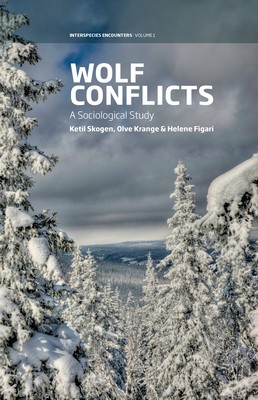
- We will send in 10–14 business days.
- Author: Ketil Skogen
- Publisher: Berghahn Books
- ISBN-10: 1785334204
- ISBN-13: 9781785334207
- Format: 15.2 x 23.1 x 1.5 cm, hardcover
- Language: English
- SAVE -10% with code: EXTRA
Reviews
Description
Wolf populations have recently made a comeback in Northern Europe and North America. These large carnivores can cause predictable conflicts by preying on livestock, and competing with hunters for game. But their arrivals often become deeply embedded in more general societal tensions, which arise alongside processes of social change that put considerable pressure on rural communities and on the rural working class in particular. Based on research and case studies conducted in Norway, Wolf Conflicts discusses various aspects of this complex picture, including conflicts over land use and conservation, and more general patterns of hegemony and resistance in modern societies.
EXTRA 10 % discount with code: EXTRA
The promotion ends in 19d.23:26:11
The discount code is valid when purchasing from 10 €. Discounts do not stack.
- Author: Ketil Skogen
- Publisher: Berghahn Books
- ISBN-10: 1785334204
- ISBN-13: 9781785334207
- Format: 15.2 x 23.1 x 1.5 cm, hardcover
- Language: English English
Wolf populations have recently made a comeback in Northern Europe and North America. These large carnivores can cause predictable conflicts by preying on livestock, and competing with hunters for game. But their arrivals often become deeply embedded in more general societal tensions, which arise alongside processes of social change that put considerable pressure on rural communities and on the rural working class in particular. Based on research and case studies conducted in Norway, Wolf Conflicts discusses various aspects of this complex picture, including conflicts over land use and conservation, and more general patterns of hegemony and resistance in modern societies.


Reviews